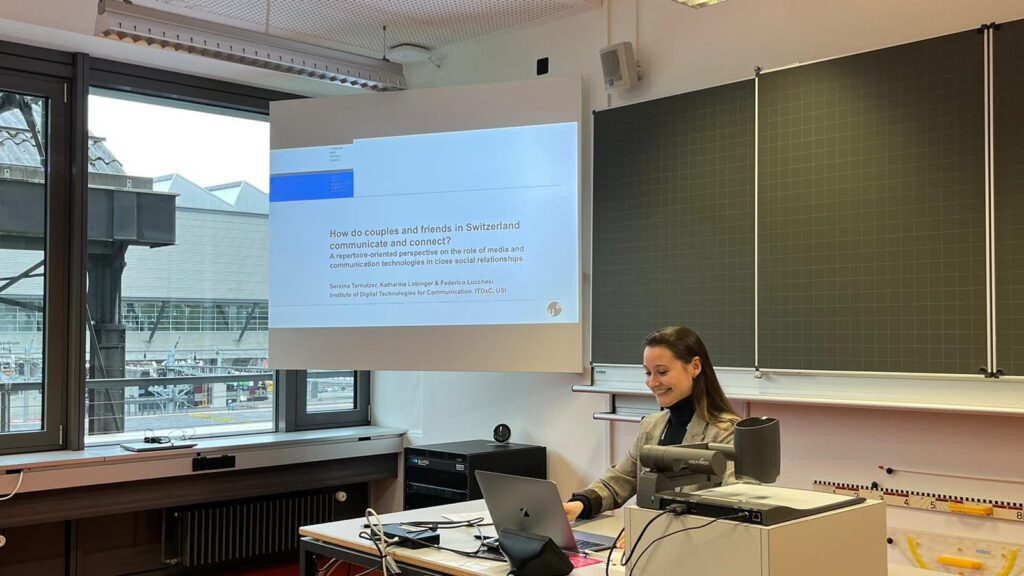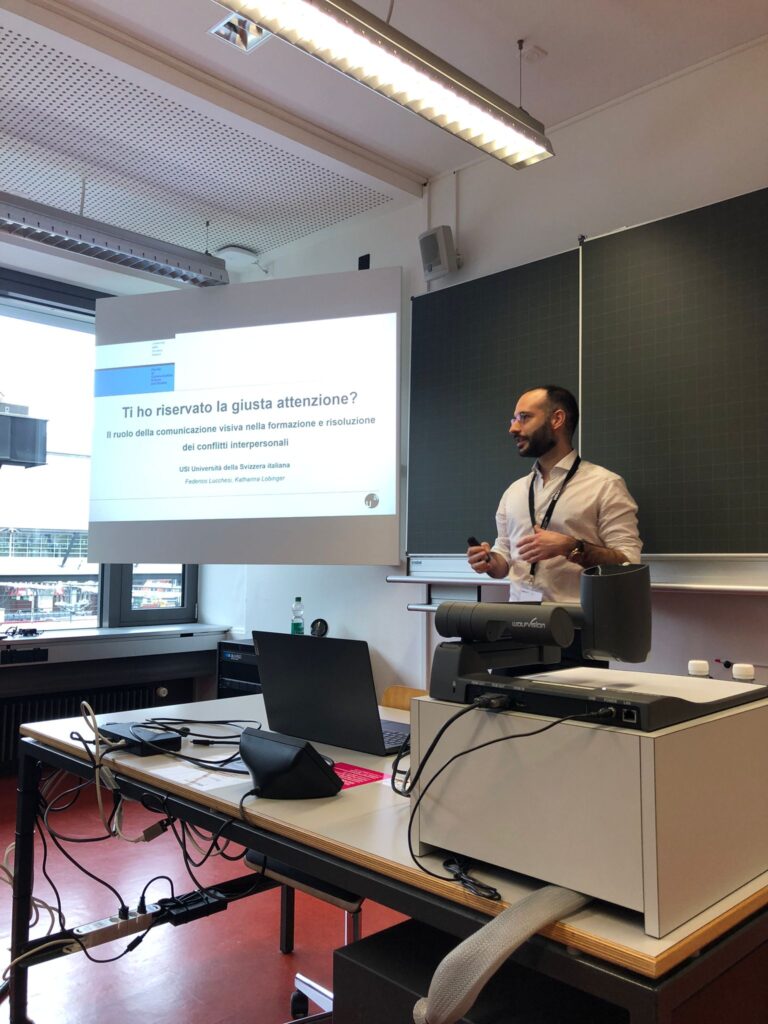ViRe Members Presenting at SACM Annual Conference 2023
- Post by: Federico Lucchesi
- August 1, 2023
- No Comment
On 20 and 21 April 2023, several ViRe members attended the SACM Annual Conference 2023, which was held at Lucerne University of Applied Sciences and Arts. The conference is the most important gathering in Switzerland for discussing scientific findings in communication and media research. The 2023 edition was dedicated to the question: “What do we pay attention to? Digital innovations in the race for attention.” ViRe members participated in two presentations.

Seraina Tarnutzer, also on behalf of Katharina Lobinger and Federico Lucchesi, gave a talk entitled “How do couples and friends in Switzerland communicate and connect? A repertoire-oriented perspective on the role of media and communication technologies in close social relationships.” In her presentation, she reflected on the role and relevance of visuals as embedded in communication repertoires in couple relationships and friendships, drawing on a repertoire-oriented approach. The data material examined stems from pair and individual interviews with 21 couples and friends in Switzerland, which were combined with creative visual methods, e.g., network drawings and visual elicitation. Based on the network drawings, as well as case summaries where key characteristics of the couples’ and friends’ cases have been summarized, the ViRe team carved out 10 communication repertoire types with a focus on the visual. Three highly different types were presented in more detail to highlight differences and similarities in these types and preliminary conclusions drawn regarding visuals in communication repertoires of close social relationships.

Federico Lucchesi, also on behalf of Katharina Lobinger, presented additional findings based on the 90 qualitative interviews that we conducted with partners and best friends. The aim of the talk was to explore the role of visual communication in the formation and resolution of interpersonal conflicts. Through empirical examples, his presentation showed that certain practices of visual communication, such as exchanging images in everyday interpersonal communication or sharing visual content online, can contribute to the emergence of conflicts. The results indicated that the main challenge, facilitated by the multiple possible interpretations of images, lies in balancing attention between individual needs and relational expectations during visual communication practices. When partners and friends fail to find the right balance, conflicts can emerge. Additionally, the presentation also highlighted the significant role of images as resources capable of evoking positive emotions and shared memories, displaying attentiveness to the other person, and thus promoting conflict resolution.




